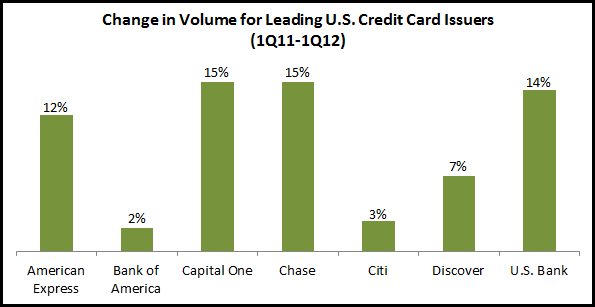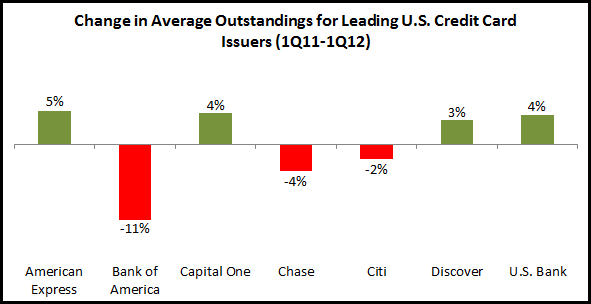A study of recently-published financials for the leading U.S. credit card issuers reveals that their charge-off rates continue to decline, and that this trend looks set to continue in the coming quarters.
The following table summarizes 1Q12 managed credit card charge-off rates for 11 of the leading U.S. card issuers. Ten of the eleven issuers reported year-on-year charge-off rate declines of more than 200 bps. The exception was American Express, which had the lowest rate. The largest decline came from SunTrust, whose rate fell from 8.68% in 1Q11 to 4.83% in 1Q12. Seven of the eleven reported quarterly declines in their charge-off rates.
Of course, many industry observers are questioning when and at what level charge-off rate declines will bottom out. Trends in 30+ day delinquency rates typically are a predictor of trends in charge-offs, and it is notable that of the seven issuers who published 30+ day delinquency rate data in the most recent quarter, all reported both year-on-year and quarterly declines.
Therefore, we should expect charge-off rates to continue to decline in the coming quarters. However, some issuers are now at or below historic averages (for example, Discover claimed that its charge-off and delinquency rates are at 25-year lows), so will have less scope for further declines. In addition, these low charge-off rates may encourage some issuers to loosen underwriting criteria in order to grow loans, which can generate some upward pressure on charge-off rates. Card portfolio acquisitions and disposals can also have an impact on charge-off rates; Capital One reported in its quarterly financials that it expects the acquisition of the HSBC card portfolio to raise charge-off rates by 75 bps.




